
Viburnum bodnantense Charles Lamont Large Specimen Plant Shrubs U,V,W Shrubs & Trees
Viburnum bodnantense 'Charles Lamont' Family: Caprifoliaceae Pronounced: vy-BUR-num bod-nan-TEN-see Quick Jumps Growing Guide Rainy Side Notes GROWING GUIDE Origin: Garden. Plant Group: Shrub. Hardiness: Sunset zones: 4-9, 14-24. USDA zones: 7-8. Heat zones: 8-7. Mature size: Height: 10 feet (3 m). Width: 6 feet (2 m). Flowering period:

Viburnum x bodnantense Charles Lamont AGM
Viburnum x bodnantense 'Charles Lamont' is an upright, deciduous shrub, bearing clusters of fragrant, pink flowers on bare stems from November to March, followed by dark green leaves. It's perfect for a sunny mixed border or a shrub border.
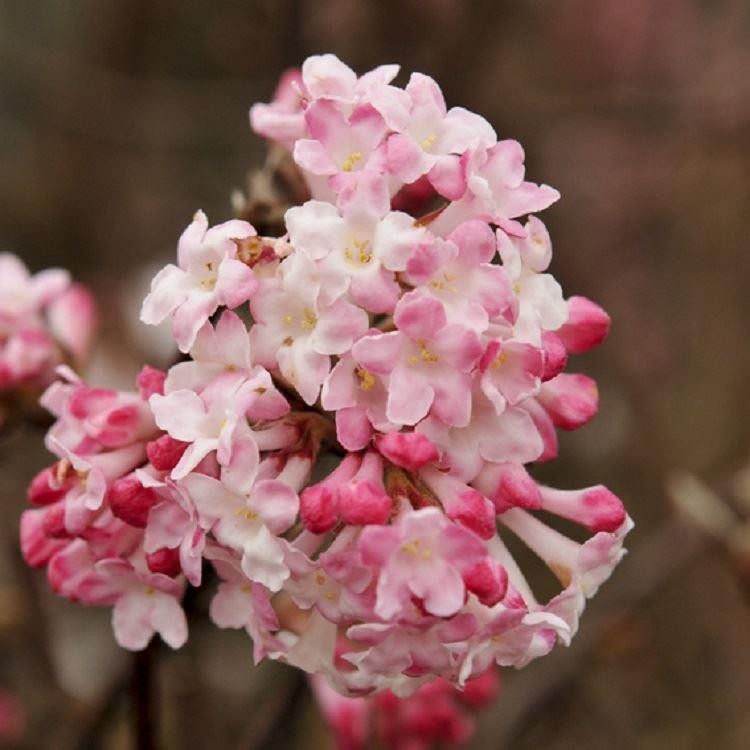
Viburnum bodnantense Charles Lamont Garden Plants
1 of 5 Variety or Cultivar 'Charles Lamont' is an upright, fast-growing, deciduous shrub. From late autumn through to spring, clusters of fragrant, pale-pink flowers emerge from darker buds. In spring, leaves emerge bronzed, turning dark green. Season of interest Height and spread Metric | Imperial Where to grow Soil type Chalky Clay Loamy Sandy

Viburnum bodnantense 'Charles Lamont'
Viburnum Bodnantense Charles Lamont is a deciduous shrub that belongs to the Adoxaceae family. It is a hybrid of two species, Viburnum farreri and Viburnum grandiflorum, and was first introduced in the United Kingdom in the 1930s. This plant is known for its beautiful pink flowers that bloom in the winter and its sweet fragrance that fills the air.

Viburnum bodnantense 'Charles Lamont' sterk opgaande struik tot 2,5 m hoog, geurt en bloeit rijk
Viburnum x bodnantense 'Charles Lamont' - Medium pink flowers which generally hold for longer before also turning white. Viburnum x bodnantense 'Deben' - has white flowers throughout the winter - with a slight hint of pink. All types have reasonable autumn foliage colour, but it is the winter flowers and fragrance which are more sought-after

PlantFiles Pictures Bodnant Viburnum 'Charles Lamont' (Viburnum x bodnantense), 1 by growin
Info Genus Viburnum (vy-BUR-num) Info Species x bodnantense (bod-nan-TEN-see) Info Synonym Sun Exposure Full Sun Sun to Partial Shade Light Shade Foliage Deciduous Provides Winter Interest Textured Velvet/Fuzzy Height 6-8 ft. (1.8-2.4 m) 8-10 ft. (2.4-3 m) Spacing 8-10 ft. (2.4-3 m) Hardiness USDA Zone 6a: to -23.3 °C (-10 °F)
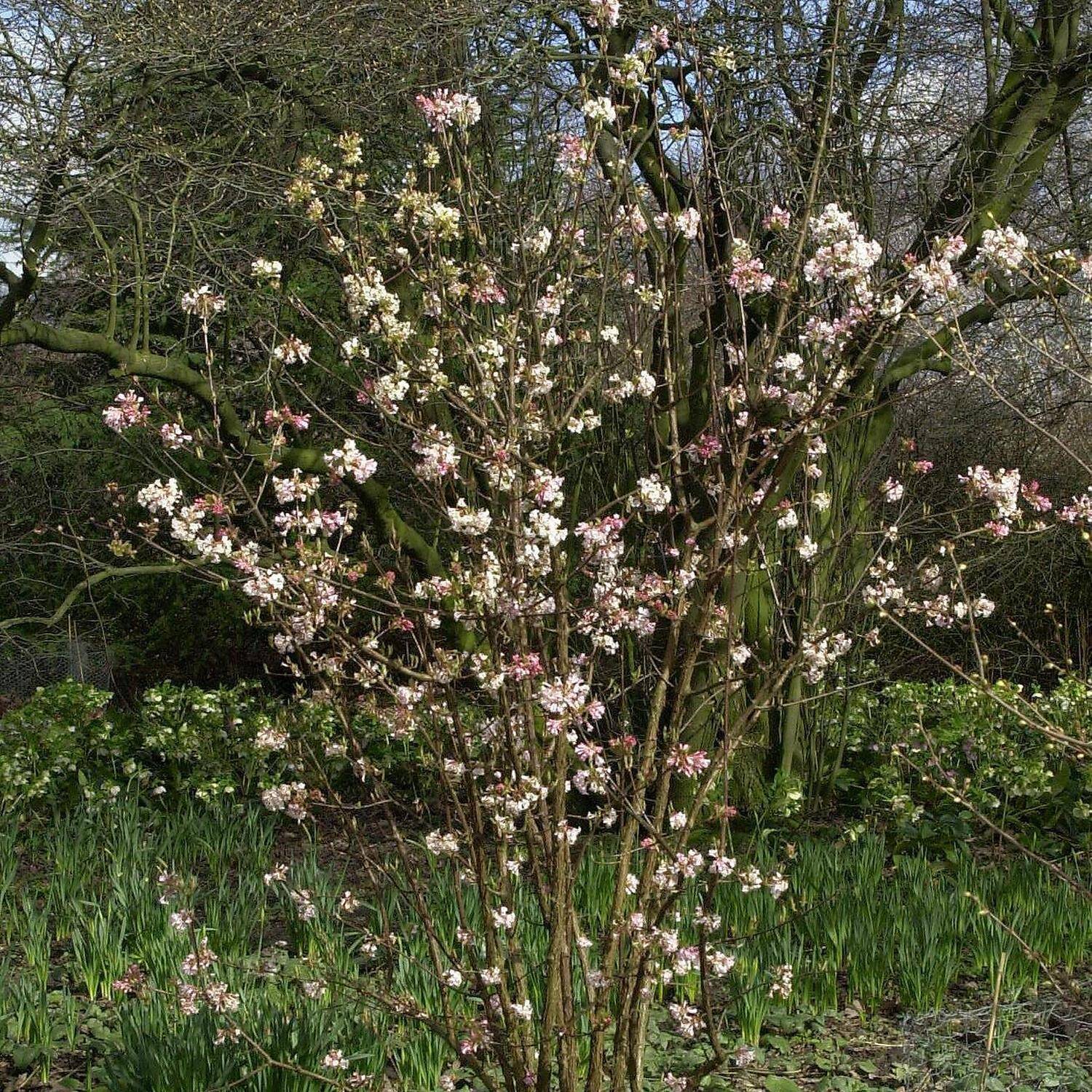
Winterschneeball 'Charles Lamont' Viburnum bodnantense
Viburnum × bodnantense 'Charles Lamont' arrowwood 'Charles Lamont' A large, upright, deciduous shrub about 3m in height, with dark green, heavily veined leaves, bronze when young. Richly scented, bright, pure pink, tubular flowers are produced in dense clusters on bare wood over a long period from autumn to spring Join the RHS today and save 25%
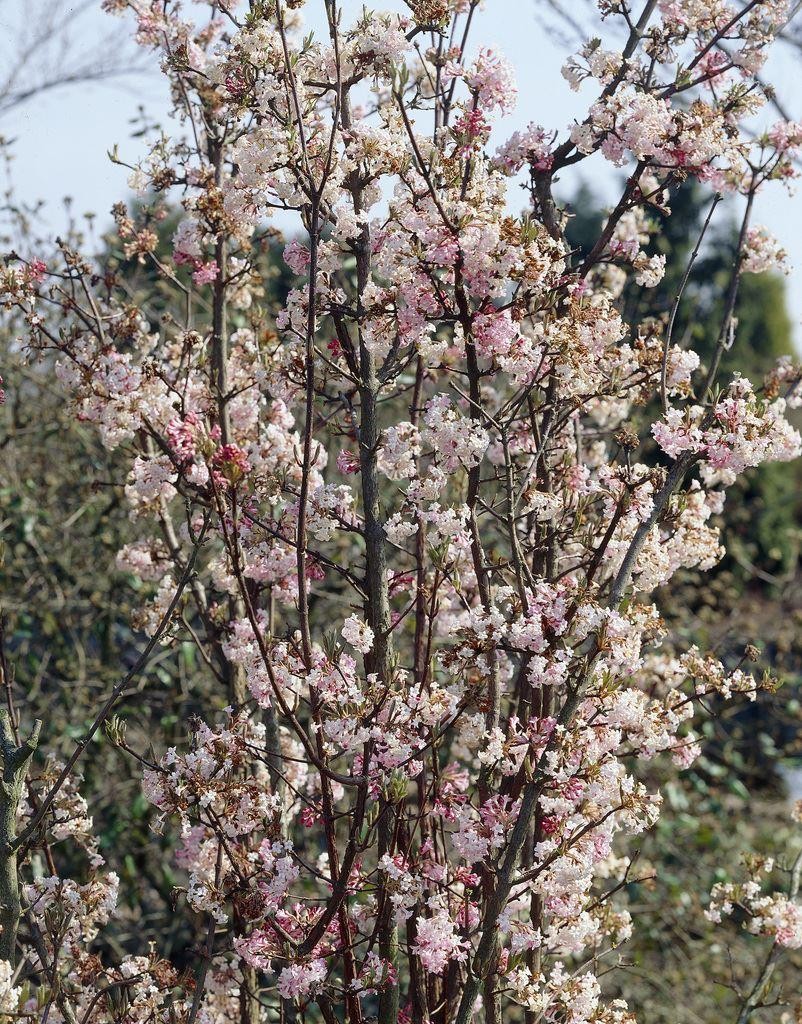
Viburnum bodnantense Charles Lamont Garden Plants
This is a fine winter-blooming deciduous Viburnum named after Charles Lamont of Edinburgh Botanic Gardens who made the first cross using the parents Viburnum grandiflorum and V. farreri. Charles didn't cherish the seedlings and chucked them which may be where we got the verb "chuck." I love fanciful etymologies. Bodnan

Viburnum x bodnantense 'Charles Lamont' Cambridge Botanic Garden
Viburnum x bodnantense 'Charles Lamont' is a broadleaf deciduous shrub with green foliage and white and pink flowers in spring. It can grow 6 FT - 10 FT - wide, 6 FT - 10 FT - tall. Attractive to bees. To grow well, it prefers sun - bright shade and regular water. Grows best in well-drained and average soil. #fragrant, #winter interest, #year round interest Plant family: #Caprifoliaceae, #.
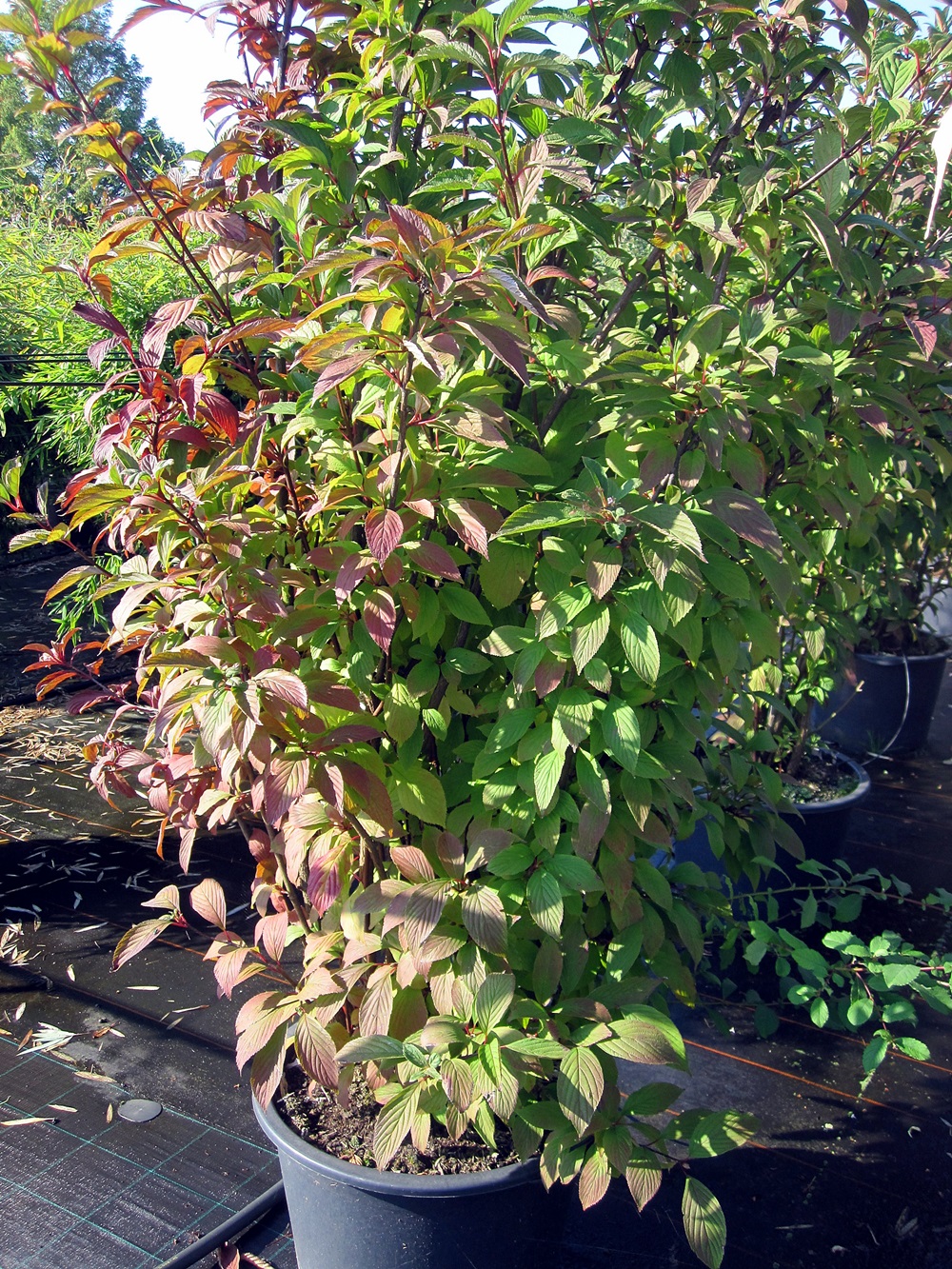
Viburnum bodnantense ‚Charles Lamont‘ von Hammel Baumschulen
The bodnant viburnum is an ornamental shrub and can be found in many parks and gardens. It is fairly slow-growing and takes about 10 to 20 years to reach its maximum size. When mature, it develops a dense bushy spread of up to three metres wide, so allow plenty of space around the shrub when planting.
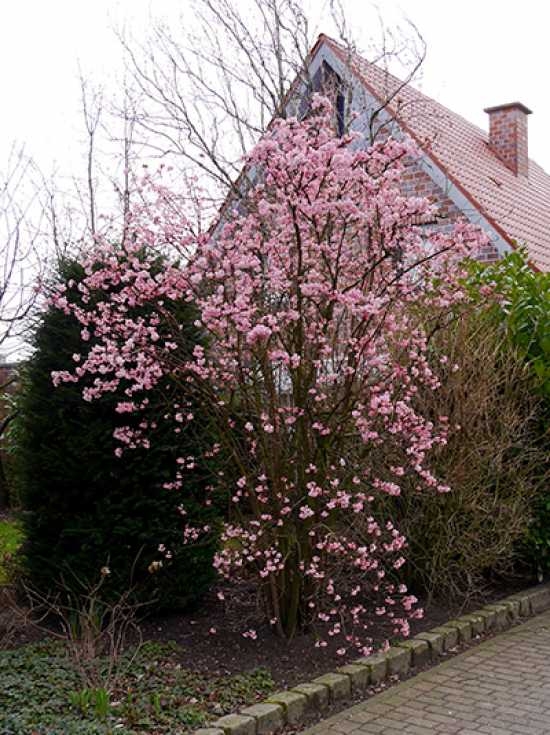
WinterSchneeball 'Charles Lamont' / Viburnum bodnantense 'Charles Lamont'
V. × bodnantense. Binomial name. Viburnum × bodnantense. Aberc. ex Stearn. Viburnum × bodnantense, the Bodnant viburnum, is a Group of hybrid flowering plant cultivars of garden origin. They originate in a cross between V. farreri and V. grandiflorum [1] made by Charles Puddle, head gardener to Lord Aberconway at Bodnant Garden, Wales around.

Viburnum bodnantense Charles Lamont Garden Plants
Viburnum × bodnantense 'Charles Lamont' 50% off selected Viburnum × bodnantense 'Charles Lamont' viburnum. 1 star 1 star 1 star 1 star 1 star 5.0 5 (2) Dense clusters of heavily scented, bright pink flowers on bare stems from November to March and toothed, dark green leaves. This upright,. Read more. 2 litre pot £.

Viburnum x bodnantense 'Charles Lamont' BBC Gardeners World Magazine
The Bodnant Viburnum name is used for a group of hybrid shrubs that are a cross between 2 viburnums created around 1935. The most popular one is 'Dawn' which has fragrant rosy-pink blooms. These shrubs bloom in colder climates on naked stems from late winter to spring and in warm winter areas, they bloom on naked stems from late autumn to spring.
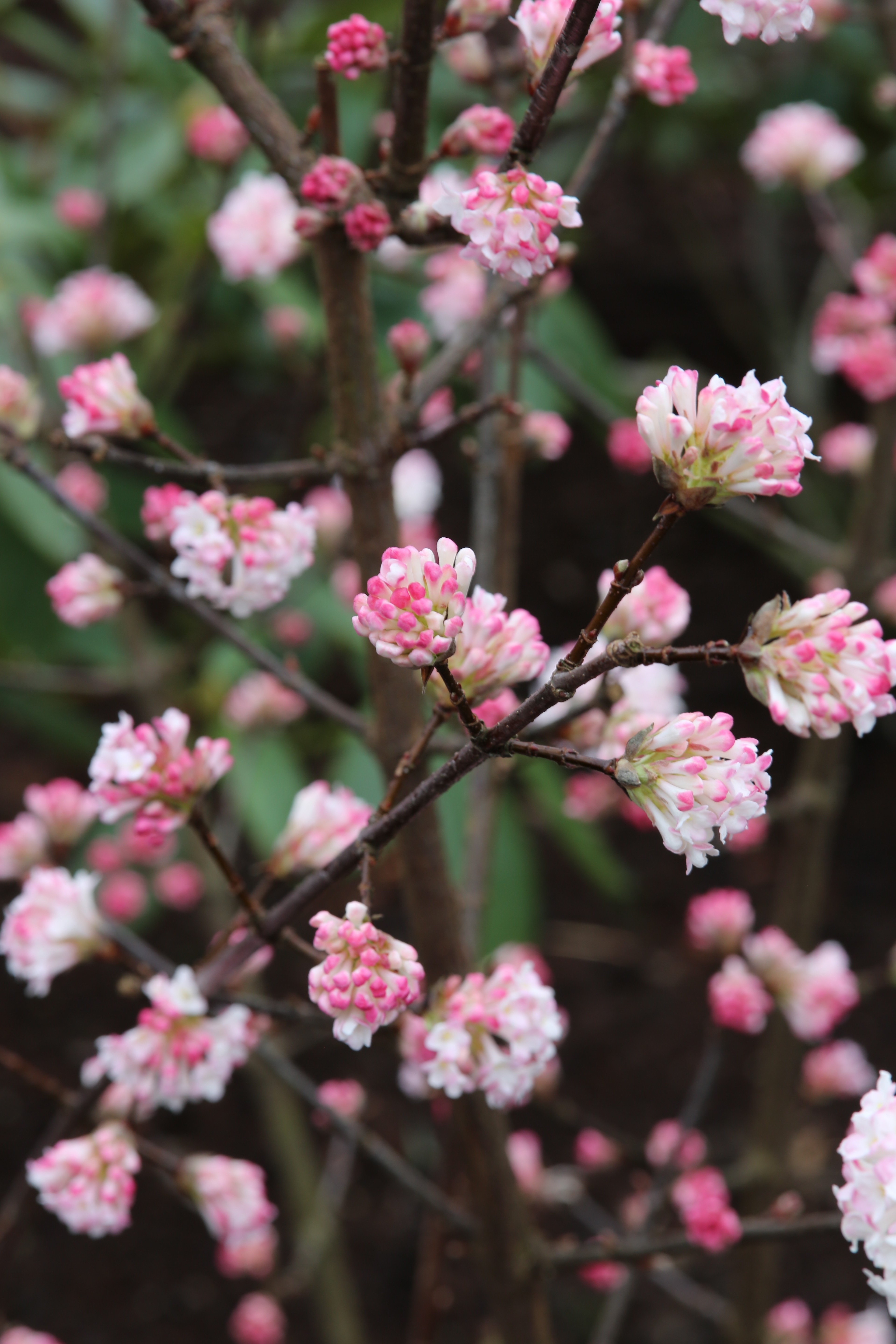
Viburnum bodnantense 'Charles Lamont' BCM Baumschule Christoph Marken
Plant database entry for Bodnant Viburnum (Viburnum 'Charles Lamont') with 5 images and 29 data details. Bodnant Viburnum (Viburnum 'Charles Lamont') in the Viburnums Database - Garden.org Learning Library

Viburnum bodnantense 'Charles Lamont', WinterSchneeball Gaertnerei Barth
Viburnum x bodnantense 'Charles Lamont' Characteristics Growth Rate in the Garden Moderate Habit Upright, Vase Soil Requirements Acid Moist, well drained Sun Requirements Full Sun to Part Shade Flowering Season Early April Fragrant Flowers Yes Fruit Bright red

Viburnum bodnantense ‘Charles Lamont’ Boomkwekerij Lugthart
Viburnum bodnantense 'Charles Lamont' is named after the Scottish horticulturist Charles Lamont (1854-1943). It is a native of China and was introduced to Western gardens in the early 20th century. It is best grown in moist, well-drained soil in full sun or partial shade. It is generally a low-maintenance plant and is relatively pest- and.